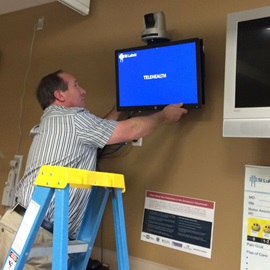Dr. Pate’s Prescription for Change
St. Luke’s Remote Patient Management Links Patients to Resources

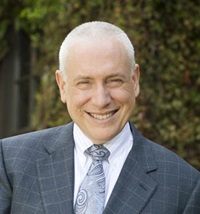
St. Luke’s Health System is committed to driving value for our patients – better outcomes at a lower total cost of care – and we know that care is most costly when it has to do with those patients with chronic diseases, especially multiple chronic diseases. This is why it’s especially important that we find new ways to better manage and coordinate their care, so that we can achieve both better outcomes and a reduction in total cost of care.
Among those new ways is the use of remote patient management. Here to inform you of how St. Luke’s is using technology to improve the care and lower the cost of caring for those with chronic illnesses is St. Luke’s Communications Coordinator Chereen Langrill.
- David C. Pate, M.D., J.D.
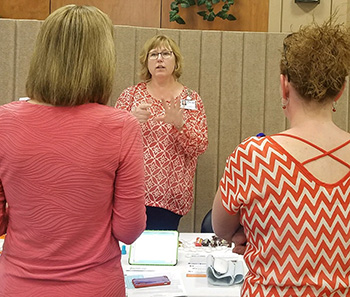
The medicine is too expensive, so the patient tries to save costs by skipping doses.
Someone has dangerously low oxygen saturation levels but is unaware of the problem.
The patient stopped taking medication because the instructions were complicated and difficult to understand.
A patient diagnosed with depression and anxiety feels overwhelmed and unsure how to stay on track.
These are examples of patients, often with multiple chronic medical conditions, who would be at risk for an emergency room visit without additional medical support. A form of care St. Luke’s introduced in August, however, makes it easier for some of these conditions to be managed from the comfort of home.
“Remote patient management” is the latest service offered through St. Luke’s telehealth program, connecting patients with a care team that can track physiologic and behavioral warning signs that, if ignored, could become significant, costly problems.
Predictive analytics help identify patients who can benefit from this program. Candidates typically have multiple chronic conditions and, based on the data, would be likely to visit the emergency department without additional support.
“The technology is simple, the care is human and the connection is real,” said Krista Stadler, senior director of St. Luke’s telehealth services.
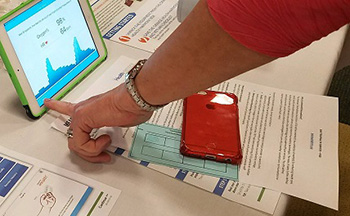
The patients can live anywhere in the state of Idaho. They receive equipment that allows them to connect with a care team of nurses and social workers in Boise. The team works with the patient to monitor vital signs such as blood pressure, oxygen levels and weight. Readings are automatically transmitted to the team, which looks for changes or trends and reaches out proactively when subtle changes occur.
Patients receive interactive educational content customized to fit their interests and needs and there are regular video conferencing sessions. Patients can request additional sessions when needed.
Face time is important for people who have chronic illnesses. The video conferencing aspect of the program allows the patient and the care team the ability to connect in a new way, and visual observations made by the nurse allow for another element of assessment to occur and ensure that the patient knows there is someone who genuinely cares about them on the other end. Talking with someone on the care team also can help a patient define priorities and determine issues that need to be addressed.
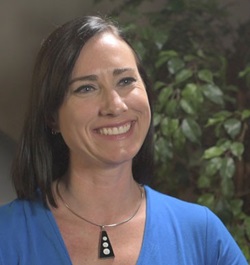
“When you have multiple chronic diseases and there is a lot of maintenance involved, how do you know what questions to ask?” telehealth care manager Hannah Simonton said.
The intent is to connect patients with the resources they need proactively so they can better manage their medical conditions. Participating clinicians can:
- Provide information on drug assistance programs to help pay for medication.
- Coach on how to take medication.
“Problem identification through remote monitoring is what’s unique about this program,” said Brian Young, senior project manager for telehealth services at St. Luke’s.
About 73 patients have enrolled in the program so far. Their experiences show the value of improved access to convenient care and costs reduced through avoided, costly hospital visits or complications.
“It’s about better care and lower costs,” Young said. “This team is part of that equation.”
About The Author

Chereen Langrill was formerly a communications coordinator for St. Luke’s Health System.


